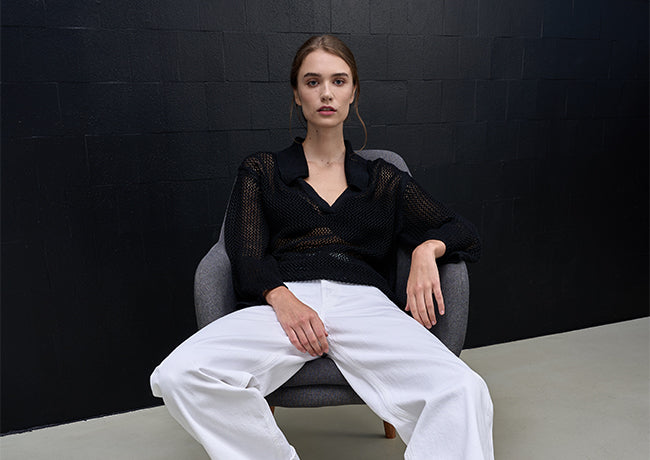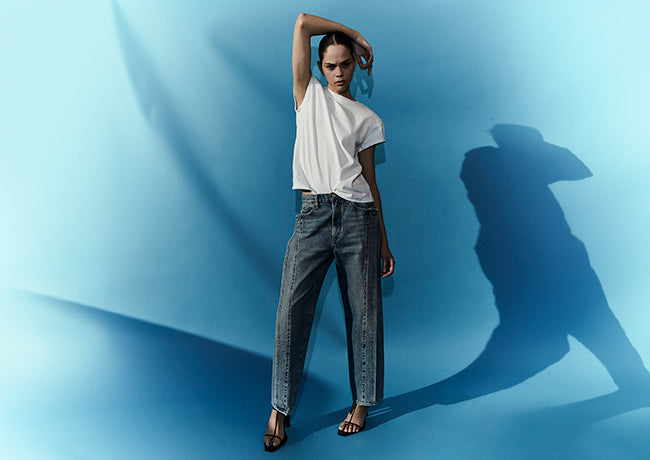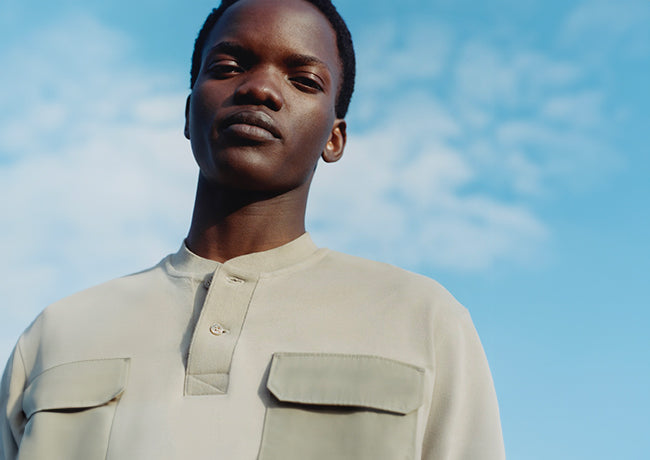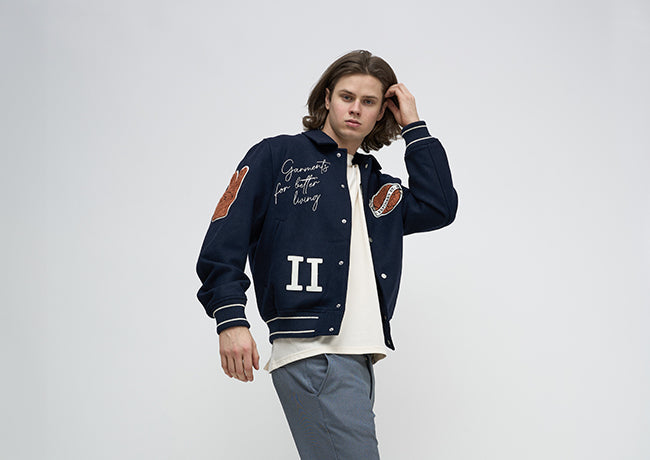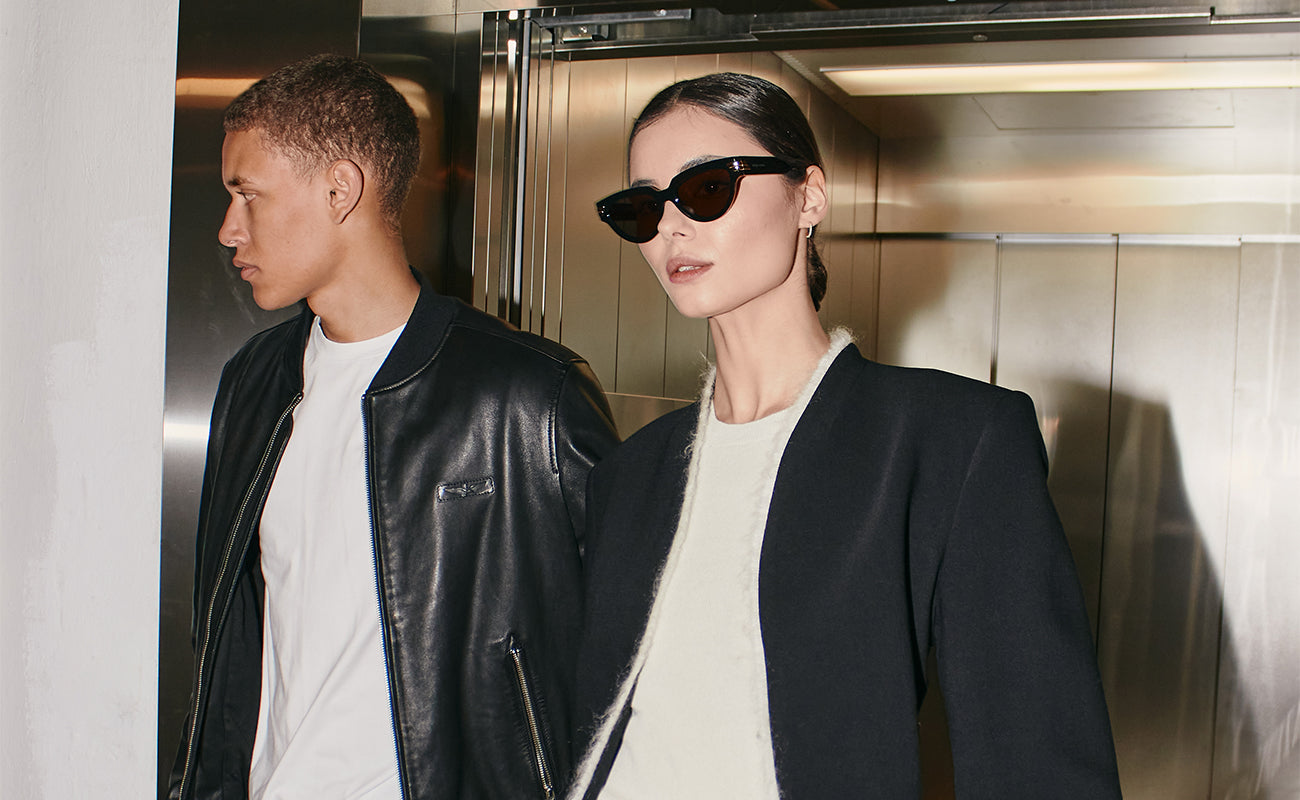Outerwear is every piece of clothing that helps to protect us from cold, wind, precipitation, and other mild or severe weather conditions. You choose your outerwear depending on climate conditions, purpose, and your personal preferences. However, we highly recommend that you thoroughly review the key characteristics of any outerwear piece to ensure that it satisfies your needs.
TEMPERATURE
The most important characteristic of outerwear is how it protects against the cold. Lightweight jackets can be successfully worn in regions with mild climates; they allow you to experiment with layering and play with styling, but you most likely won’t choose them for snowy, below-zero weather. On the other hand, parkas can be extremely durable in the most extreme temperatures. They are designed to keep warm and cover as much of the body as possible.
These badges will help you navigate through outerwear temperature scales:

Ultra-light and minimal
MILD COLD
Approximate temperature range 5°C / -5°C. Wear these garments to take the chill off breezy nights or as a layering option when things get colder than expected.

Your everyday winter workhorse
MEDIUM COLD
Approximate temperature range 0°C / -15°C. Without overheating, these garments will hold you down through the rain, sleet, hail, and snow.

Heavy and durable
COLD
Approximate temperature range -10°C / -25°C. Choose these garments when the cold gets serious.

Blizzard conqueror
STRONG COLD
Approximate temperature range -30°C and below. It is tailored and explicitly engineered to endure the extreme cold of the true north.
Water repellency
Water repellency is the ability of the material to resist water penetration, meaning the water only beads on the outer side of the fabric and cannot seep through. This is an important feature if you are living in a wet area with frequent and heavy rains, snow, and hail. Water-resistant materials can also be called hydrophobic.
Water resistance ratings
|
5000 mm |
minimum rating, will endure light showers and mild snow. |
|
10000 mm -15000mm |
will resist most downpours and heavy snow |
|
20000 mm and higher |
good enough even to hike Everest |
BREATHABILITY


Breathable material allows moisture vapor to be transported through it. In other words, the sweat is not going to accumulate under your jacket but will easily evaporate and serve its main purpose—cooling down your body. Those materials have tiny holes to allow water vapor to escape but not enter because sweat vapor consists of smaller water molecules than water droplets from the outside.
Breathable outerwear is a must-have for an active lifestyle. It’s extremely important, especially in the freezing cold. Whether you are going to conquer a mountain peak or you enjoy long walks around the city, a breathable jacket will come in handy.
BREATHABILITY RATINGS
|
5,000 – 10,000g/m² |
suitable for camping, or urban travel |
|
10,000 – 15,000g/m² |
fine for backcountry skiing |
|
15,000 – 20,000g/m² and above |
a heavy tool to make an extended trip to the hills or for trekking in warm climates |
Wind resistance
Wind resistance is the ability of the clothing to physically block the wind. It is achieved by the specific fabric texture, which is assembled to create a barrier. Wind-resistant outerwear provides protection from gusts while prioritizing comfort.
Many types of outerwear, from vests to parkas, have this feature. Due to the high-tech modern materials and sensible design, wind-resistant garments can be not only practical but also stylish.
MEMBRANE

A modern high-tech fabric for outerwear always includes the membrane layer in it. A membrane repels water from the outside while allowing the moisture from the inside to pass through. The thinner the membrane is, the more breathable it becomes. On the other hand, thicker membranes provide better waterproof protection. Membranes can be microporous and hydrophilic. The first one works due to the difference in size of water molecules; the second one absorbs moisture from the inside and releases it on the outer side through osmosis.
The way the membrane is mounted into the fabric determines the number of layers the outerwear will have.
- 2-layered: when a membrane is laminated to the outer fabric.
- 2,5-layered: when the two outer layers are melded into a partially protective inner layer.
- 3-layered: when a membrane is laminated to the outer fabric and bonded to an inner liner.
Membrane types
|
Gore-Tex |
well-known for its distinctive waterproof and breathability power. These products go through high-level performance tests to make sure they meet the highest quality standards |
|
Ripstop |
extremely resistant to rips and tears. It’s lightweight, water-repellent nylon or polyester fabric woven in a reinforcing pattern |
|
Nyluxe |
nylon-based water-repellent and wind-resistant fabric. It is durable and has a slight stretching capacity |
|
Polartec Neoshell |
highly breathable and lightweight, it stretches well and is comfortable to wear |
Filling
Outerwear usually has an insulation layer, which provides different levels of warmth depending on the filling type and the material's quality.

Down
Usually the feathers of a goose or a duck. The most common insulation. It is extremely lightweight, provides a great deal of warmth, and has good compression ability.

Polyester
A synthetic material. The second most common. Cheaper than down, more lightweight, but a bit bulkier.

Wool
Good insulator; it can be compressed, but it is quite heavy and not water-resistant.

Cotton
Provides a good warmth level and can be compressed, but it has the same disadvantages as wool: heavy and not water-resistant.

FILL POWER
Fill power is an indicator of the quality and thickness of the down inside the outerwear. It describes the number of cubic inches that one ounce of down will fill. The higher the fill power, the thicker the clothing will be, and the better its ability to trap the air and provide more warmth.
Fill power ratings
|
300-450 |
lightweight and very thin. Can be suitable for warmer climates or fall/spring temperatures |
|
450-600 |
medium thickness, appropriate for warm winters without heavy snow and blizzards |
|
600-800 |
heavy and hardy. It will keep you warm during the coldest urban wintere |
|
800 and above |
this one will endure even the arctic cold weather |

